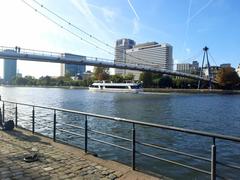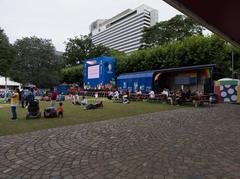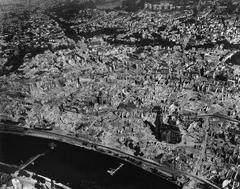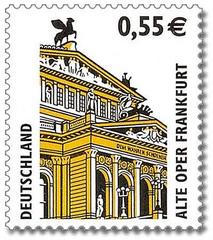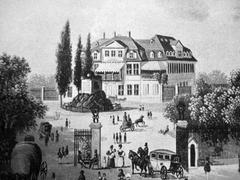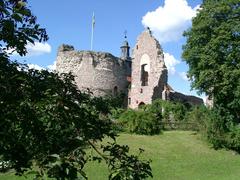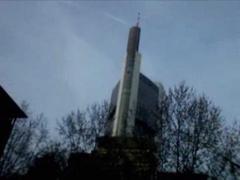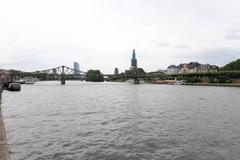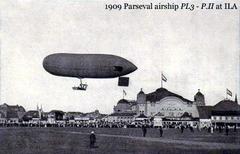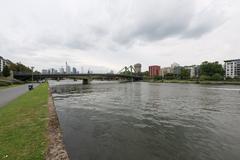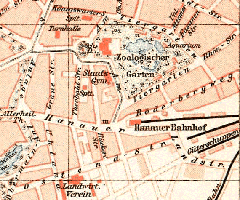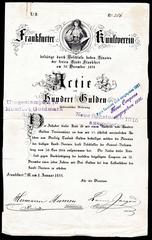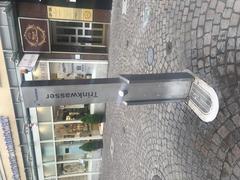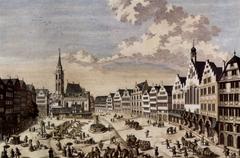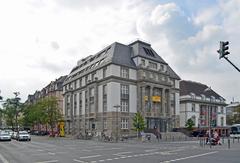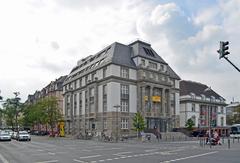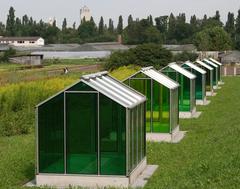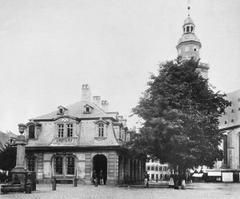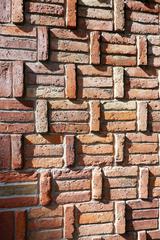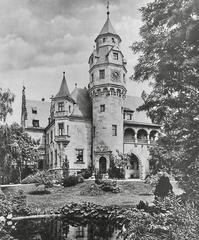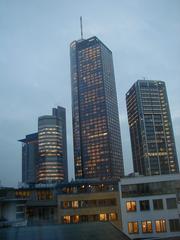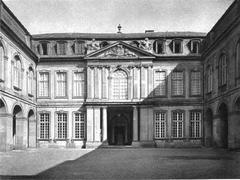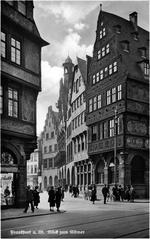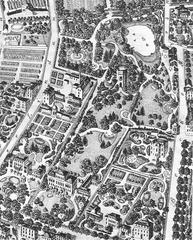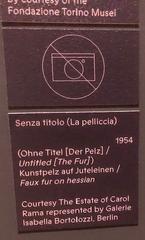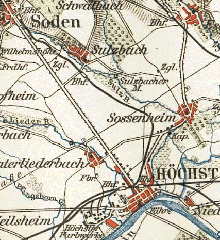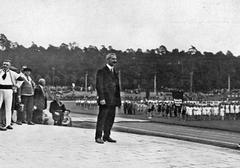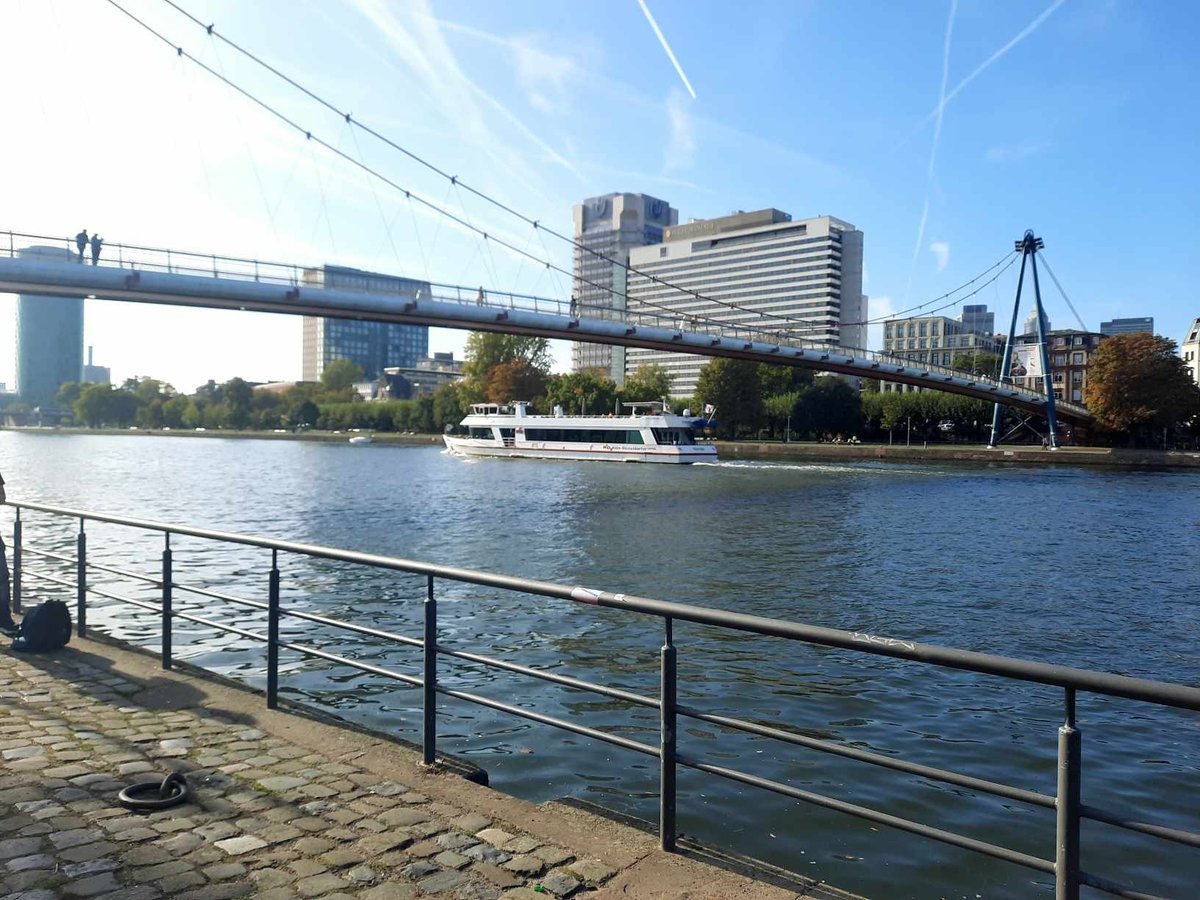
Holbeinsteg Visiting Hours, Tickets, and Travel Tips
Publication Date: 23/07/2024
Introduction: Overview of Holbeinsteg
Holbeinsteg, a modern pedestrian bridge in Frankfurt am Main, Germany, stands as an architectural and cultural landmark that beautifully encapsulates the city’s blend of history and innovation. Designed by esteemed architect Albert Speer Jr., Holbeinsteg was constructed between 1990 and 1993 to improve connectivity across the River Main. Named after the renowned painter Hans Holbein the Younger, the bridge is not merely a functional structure but also a testament to Frankfurt’s rich cultural tapestry. Spanning 142 meters, its innovative suspension design, supported by two towering pylons, offers both structural stability and aesthetic allure. Holbeinsteg plays a pivotal role in urban development by connecting the Museumsufer (Museum Embankment) with the bustling financial district, enhancing pedestrian access to key cultural hubs like the Städel Museum. This guide will delve into Holbeinsteg’s history, architectural significance, visitor information, cultural impact, and practical travel tips, providing a comprehensive resource for anyone planning to explore this iconic Frankfurt landmark. For more detailed information, visit the official website of Frankfurt Tourism.
Table of Contents
- Introduction
- History of Holbeinsteg
- Visitor Information
- Cultural and Social Impact
- Technological Innovations
- Maintenance and Upgrades
- Nearby Attractions and Travel Tips
- FAQ Section
- Conclusion
Exploring Holbeinsteg - History, Visitor Information, and Cultural Significance in Frankfurt
History of Holbeinsteg
Origins and Construction
Holbeinsteg was constructed between 1990 and 1993 as part of a broader urban development initiative to enhance connectivity between the northern and southern parts of Frankfurt. Designed by the renowned German architect Albert Speer Jr., the bridge was named after Hans Holbein the Younger, a famous German painter, reflecting the city’s rich cultural heritage.
Architectural Design
Holbeinsteg is notable for its innovative suspension structure. The bridge is 142 meters long and 5.5 meters wide, supported by two pylons that rise 26 meters above the river. The pylons are connected by steel cables, which hold the bridge deck in place, providing structural stability and an aesthetically pleasing silhouette against the Frankfurt skyline. The use of steel and concrete ensures durability and resilience, essential for withstanding heavy pedestrian traffic.
Significance in Urban Development
Before Holbeinsteg, the only pedestrian crossing in the vicinity was the Eiserner Steg, which was often overcrowded. Holbeinsteg provided a much-needed alternative, easing pedestrian traffic and enhancing accessibility between the city’s cultural and commercial districts. The bridge connects the Museumsufer (Museum Embankment) on the southern bank with the financial district on the northern bank, facilitating easy access to important cultural institutions like the Städel Museum and the German Film Museum.
Visitor Information
Visiting Hours and Tickets
Holbeinsteg is open 24/7 and is free to access. There are no tickets required for crossing the bridge. However, some cultural events held on the bridge, such as during the Museumsuferfest, may have specific timings and ticket requirements.
Special Events and Guided Tours
Holbeinsteg is a venue for various cultural events and public gatherings throughout the year. During the annual Museumsuferfest, the bridge is adorned with lights and decorations, transforming it into a vibrant cultural hub. Guided tours of Frankfurt often include a visit to Holbeinsteg, providing historical and architectural insights.
Cultural and Social Impact
Holbeinsteg has become a social and cultural landmark, popular with both locals and tourists. It offers stunning views of the Frankfurt skyline and the River Main. The bridge has also featured in various films, television shows, and literature, making it an iconic symbol of Frankfurt.
Technological Innovations
The construction of Holbeinsteg incorporated several technological innovations, including a tuned mass damper system to minimize vibrations caused by pedestrian traffic. Additionally, the bridge’s lighting system uses energy-efficient LED lights, enhancing safety and visibility while highlighting its architectural features.
Maintenance and Upgrades
Since its inauguration, Holbeinsteg has undergone several maintenance and upgrade projects to ensure its longevity and safety. Regular inspections and modern surveillance systems enhance security and monitor pedestrian traffic, reflecting Frankfurt’s commitment to maintaining its infrastructure.
Nearby Attractions and Travel Tips
Visitors to Holbeinsteg can explore nearby attractions such as the Städel Museum, German Film Museum, and the vibrant Sachsenhausen district. Travel tips include visiting during sunset for the best views and checking the local event calendar for cultural happenings on the bridge.
FAQ Section
Q - What are the visiting hours for Holbeinsteg? A - Holbeinsteg is open 24/7.
Q - Is there a fee to cross Holbeinsteg? A - No, crossing Holbeinsteg is free.
Q - Are there any guided tours that include Holbeinsteg? A - Yes, many guided tours of Frankfurt include a visit to Holbeinsteg.
Conclusion
Holbeinsteg is more than just a bridge; it is a testament to innovative design and urban planning. Its historical significance, cultural impact, and modern amenities make it a must-visit landmark in Frankfurt. Whether you are a local or a tourist, Holbeinsteg offers a unique experience that beautifully bridges the past and the present.
For more detailed information on the architectural aspects and historical significance of Holbeinsteg, you can visit the official website of Frankfurt Tourism.
